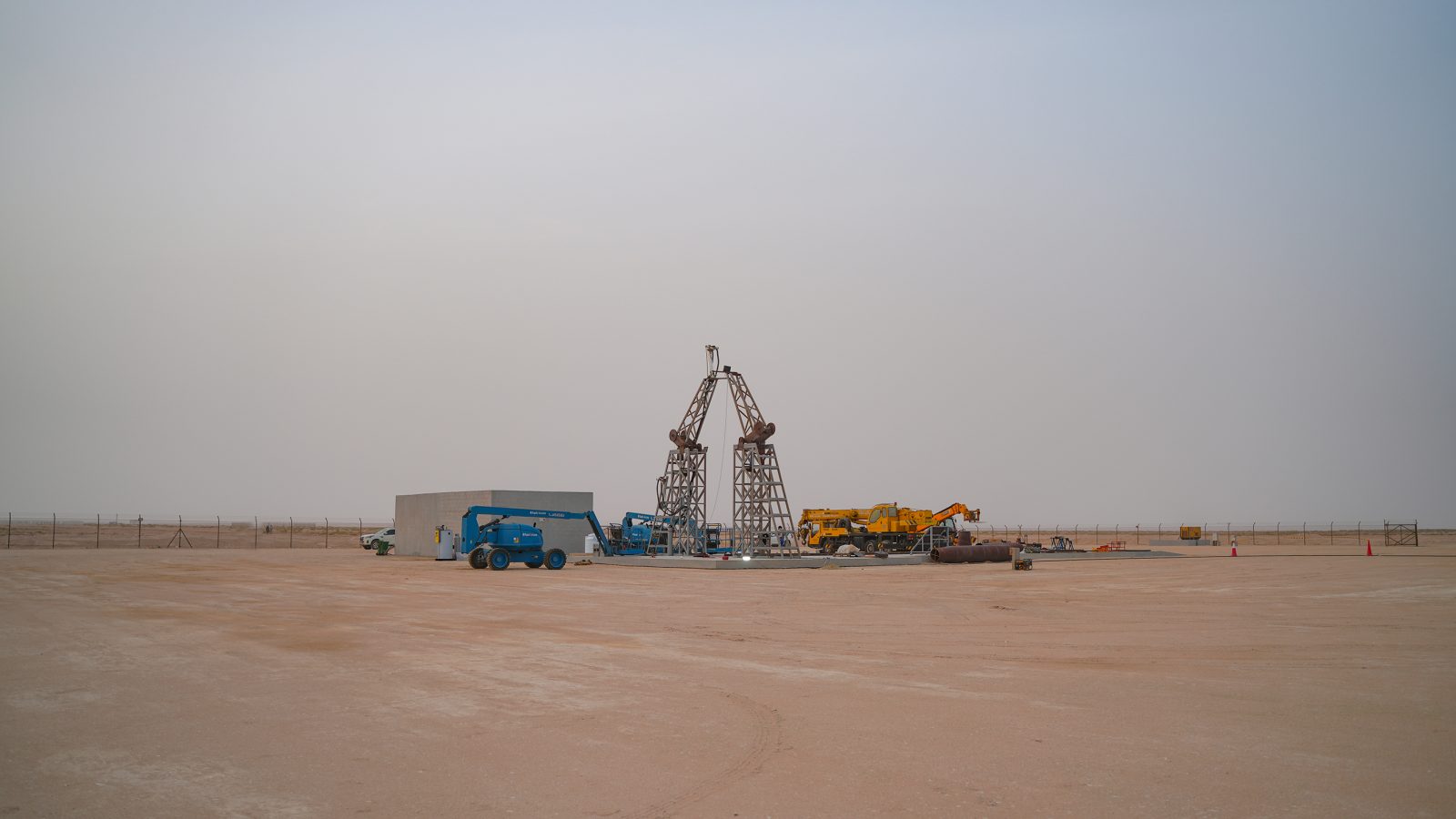Oman’s dream for a spaceport sits in a swath of desert overlooking the Arabian Sea. If all goes according to plan, three separate complexes here will launch everything from small suborbital rockets for scientific experiments to superheavy behemoths into space, bringing payloads of satellites to the stars. There will be a large mission-control building, warehouses for rocket assembly and testing, and a business park. If the spaceport succeeds, by 2027 Oman will join the small number of countries — just a dozen to date — that possess the facilities to launch objects into space.
But on a scorching afternoon this past April, the site was just an unpaved road, three large tents flapping in a heavy wind, and a few temporary buildings in the distance. The tents served as a makeshift visitors’ center for the spaceport’s first ever on-site public event.
Julanda Al-Riyami, the chief commercial officer at Etlaq, the company behind the spaceport, seemed tense. The event, called the Etlaq Fan Experience, was set to culminate the next morning with a rocket launch. The high winds were a bad omen.
The launch would be just the second in Etlaq’s short history. Approximately 50 people had gathered inside the tents, where boys in dishdashas and girls in white hijabs clustered around a robot exhibit and sat in the darkness of an inflatable cosmos. Bedouin women from a nearby village looked on. Al-Riyami, tall and intense, chatted with rocket engineers, coordinated booth space with sponsors, and fretted over pallets of water bottles. A successful launch, he said, requires attention to the smallest of details. “It’s not very often that in the middle of the desert you have an event like this,” Al-Riyami told Rest of World. “What we want to start is this heritage, or let’s say a culture, of watching rocket launches.”
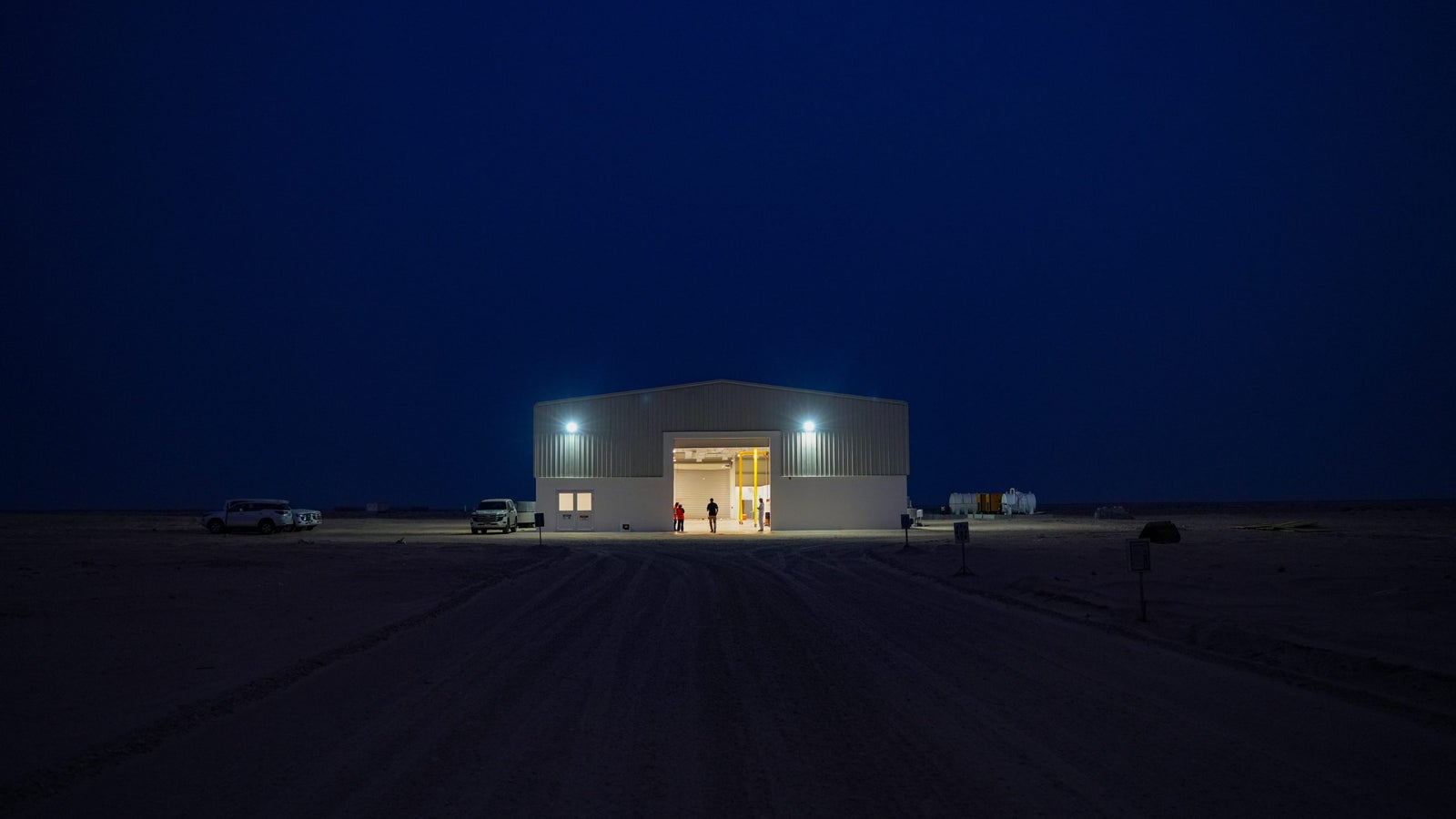
Etlaq’s current launch site.
Etlaq
Oman has a history of exploration that dates back to its ancient mariners, but is a newcomer to the global space industry, which was estimated to be worth $630 billion in 2023 and projected to grow by almost 300% over the next decade. The space market in the Middle East and Africa is already worth an estimated $18 billion. The United Arab Emirates accounts for at least 40% of government spending on space in the region. Its space agency funded, developed, and managed a probe to Mars that launched from Japan in 2020. Now it’s planning an unmanned mission to the asteroid belt for 2028. Saudi Arabia has developed several active satellites, and its own domestic space industry is currently worth $8.7 billion.
Oman sees a unique market gap for itself. Over half of the world’s 22 active launch sites are in Russia, China, or the U.S. There are no commercial spaceports in the Middle East or Africa — and Oman’s geography makes it a uniquely suitable location in the region. Etlaq could open doors for smaller countries with off-planet ambitions and decrease dependence on the world’s major powers. An active spaceport would also make Oman an attractive destination for private space companies to set up shop.
Ana Escrogima, the U.S. ambassador to Oman, told Rest of World a few American tech companies have already launched in Oman, and she expects more will follow. “They really have zeroed in on space companies, and we have focused on making those connections with U.S. space companies as well.”
Al-Riyami seemed confident in Etlaq’s chances. “Oman is a country that has been in the forefront of exploration with seafaring,” he told Rest of World. “Now it’s space.”
The world’s first spaceport started as a Soviet ballistic missile testing site on the steppes of Kazakhstan. Built in the mid-1950s, the site launched both Sputnik 1, the first artificial satellite, and Yuri Gagarin, the first human traveller, into space. The United States used a missile testing site at Cape Canaveral for its earliest space flights, then built the nearby Kennedy Space Center for the Apollo program. More spaceports followed over the subsequent decades, popping up everywhere from Alaska to New Zealand. India, Japan, and both Koreas have active launch sites, as do Australia, Iran, and France (by way of French Guiana). As of July 2025, the planet has 22 active spaceports capable of orbital launch.
But spaceport construction has not kept pace with the space-industry boom. In 2018, the world sent 452 objects into space. Five years later, that number was 2,895: a roughly 500% increase. James Causey, executive director of the Global Spaceport Alliance, an international association for launch sites, told Rest of World the demand for launches is continuing to grow. “Today, [the bottleneck] is not that bad,” he said. “But the demand is definitely increasing.”
Few countries have the political stability and geography necessary for a good spaceport. Oman is often called the “Switzerland of the Middle East,” and the country frequently provides neutral ground for negotiations — in April, it facilitated nuclear peace talks between the U.S. and Iran.
As for geographic location, Oman is ideally suited. Although you can build spaceports at extreme northern and southern latitudes, locating them near the equator is considered best. That’s because the Earth spins fastest at the equator, which gives rockets an extra boost when pushing off the surface of the planet, and provides more options for satellite placement. “The lower your latitude, the more range of orbits you can have,” Jim Cantrell, who worked at SpaceX in its earliest days and is now CEO of launch startup Phantom Space, told Rest of World. Canaveral sits at 28 degrees north. Etlaq sits at 18 degrees — only the European Space Agency’s port in French Guiana sits closer to the equator.
The best spaceports are also remote. Sometimes rockets don’t make it into space. Parts commonly fall back to Earth — ideally, in uninhabited areas. The UAE would like a spaceport, Cantrell said, but debris could fall into the Strait of Hormuz, a densely trafficked waterway. Saudi Arabia is similarly surrounded.
Oman’s spaceport, on the other hand, gives out onto the Arabian Sea, a vast expanse of empty ocean that makes it perfect for debris falling back down to Earth. Between this geographic placement and the country’s political stability, Cantrell said, it’s an intergalactic Goldilocks situation that could “place Oman square in the center of the future space industry.”
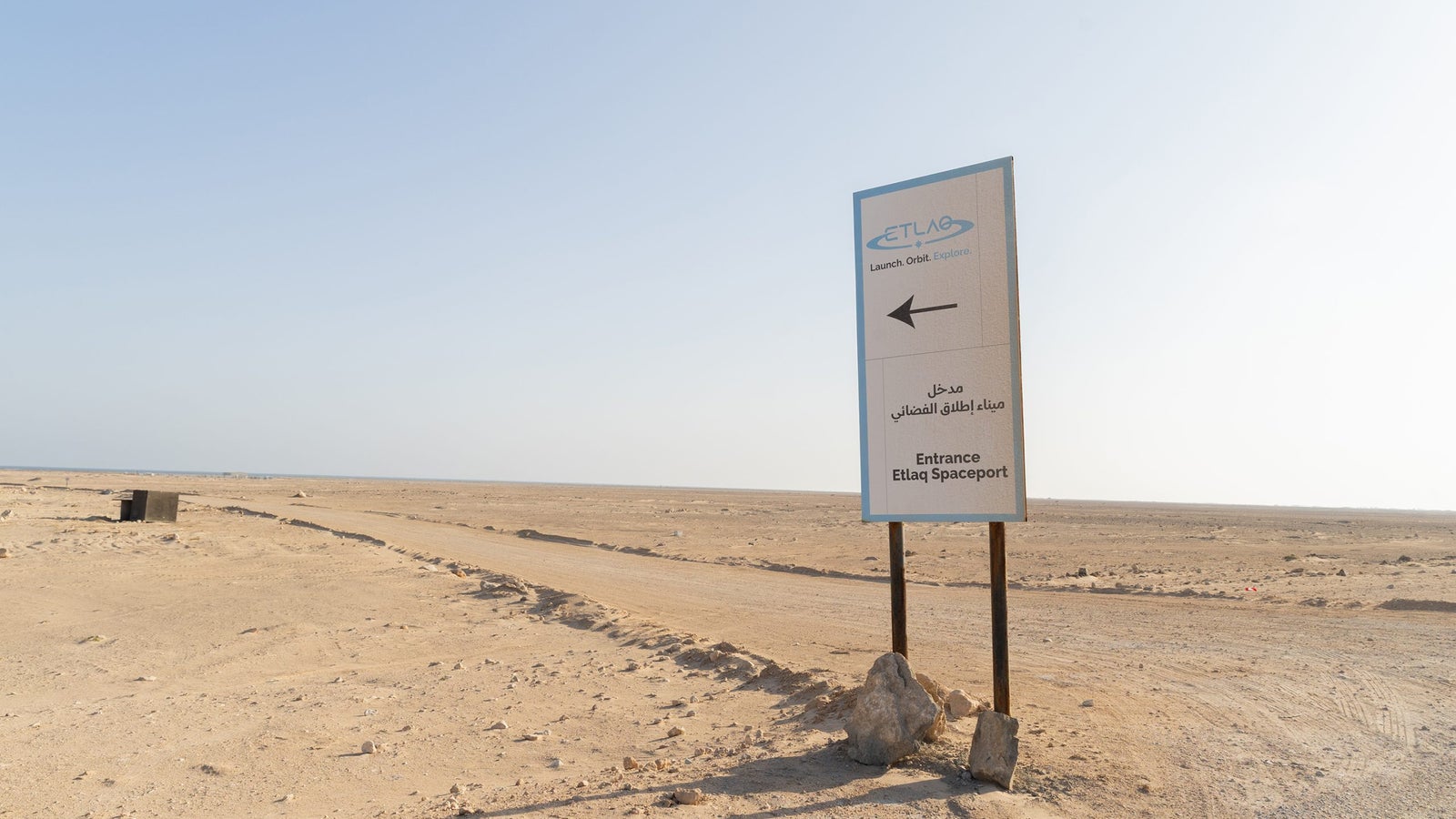
A sign for the Etlaq spaceport along a desert road south of Duqm.
Tara Atkinson for Rest of World
The scale of Oman’s tech ambition is evident in Duqm, a former fishing village 165 kilometers (100 miles) from Etlaq that has been converted into a special economic zone. Newly completed posh hotels sit at the center of packed-dirt parking lots, virtually empty. Vacant shops and office buildings still have construction labels affixed to their plate-glass windows.
By 2040, Omani planners say, the city will accommodate a quarter million people, ideally employees of foreign businesses eager to take advantage of the zone’s tax-free status and burgeoning infrastructure. The proto-metropolis abuts a seaport that can receive shipments of rockets ready for launch from Etlaq, along with a major fishing harbor and one of the region’s largest dry docks, used to repair ships.
The plan for Duqm was decreed in 2011 by Sultan Qaboos bin Said, who took power in 1970 by deposing his father with British support. At the time, the nation known as the Sultanate of Muscat and Oman had just 10 kilometers (6 miles) of paved roads, three primary schools, and no universities. Life expectancy was 49. Slavery was legal. Endless cycles of civil unrest and draconian crackdowns wracked the divided nation.
Qaboos renamed the country, offered amnesty to fighters who had opposed his father, and enacted a range of reforms. Pushing a concept of a shared, ancient history focused on a legacy of exploration and scientific achievement, he began an oil-fueled sprint toward prosperity that emphasized infrastructure and human capital. Fifty-five years later, Oman has none of the vanity towers or desert ski resorts that showcase the glitz and glamor of its Gulf neighbors. But, fueled by the oil industry, the country now has thousands of primary schools, dozens of universities, a sprawling network of well-kept roads, and a life expectancy of over 70.
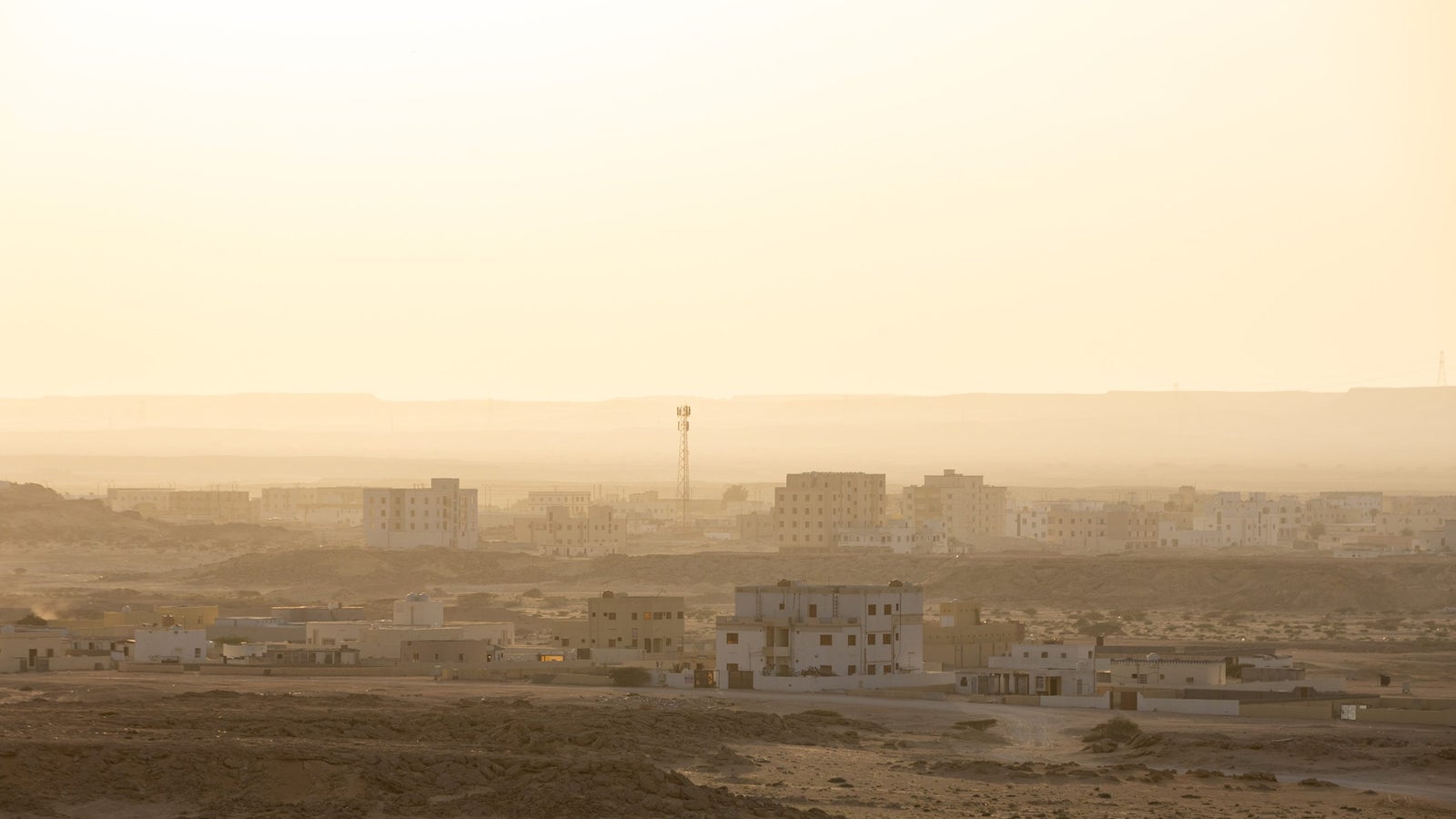
Duqm has seen a burst of construction as part of a drive to attract new tech-focused industries.
Duqm has seen a burst of construction as part of a drive to attract new tech-focused industries.
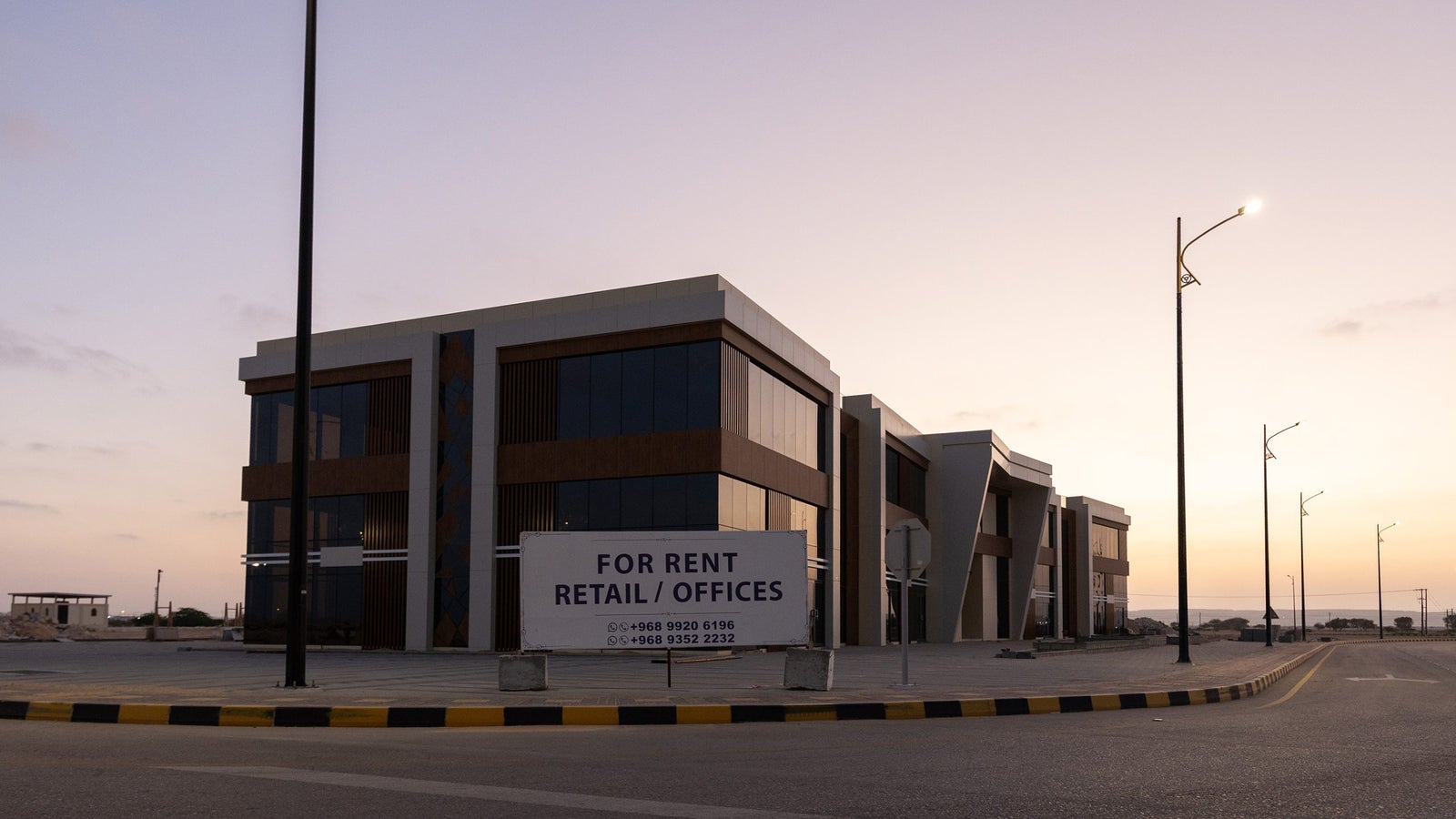
Office buildings await future tenants in Duqm’s special economic zone.
Tara Atkinson for Rest of World
Office buildings await future tenants in Duqm’s special economic zone.
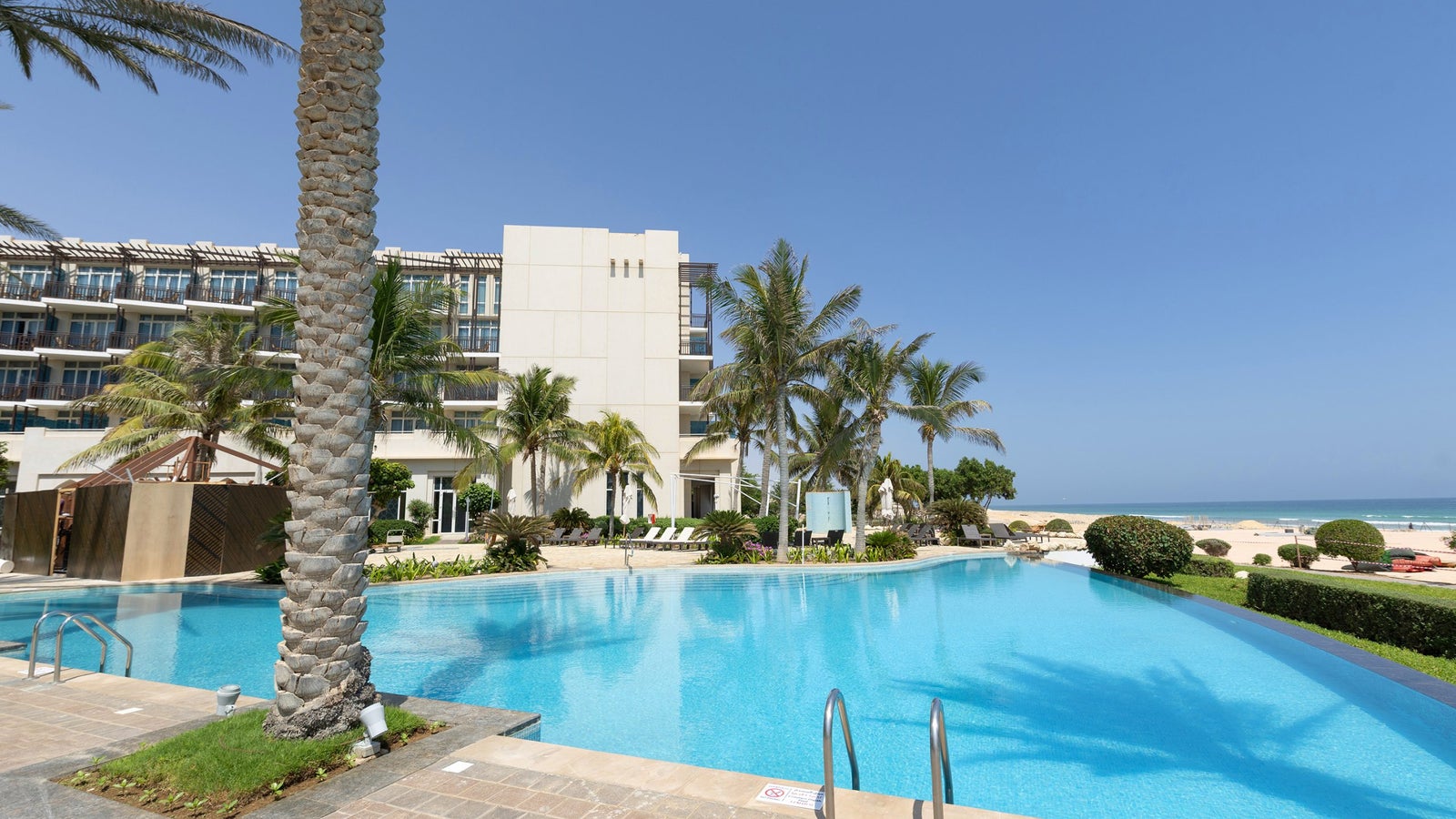
Seaside resorts are part of the area’s investment in business and tourism.
Seaside resorts are part of the area’s investment in business and tourism.
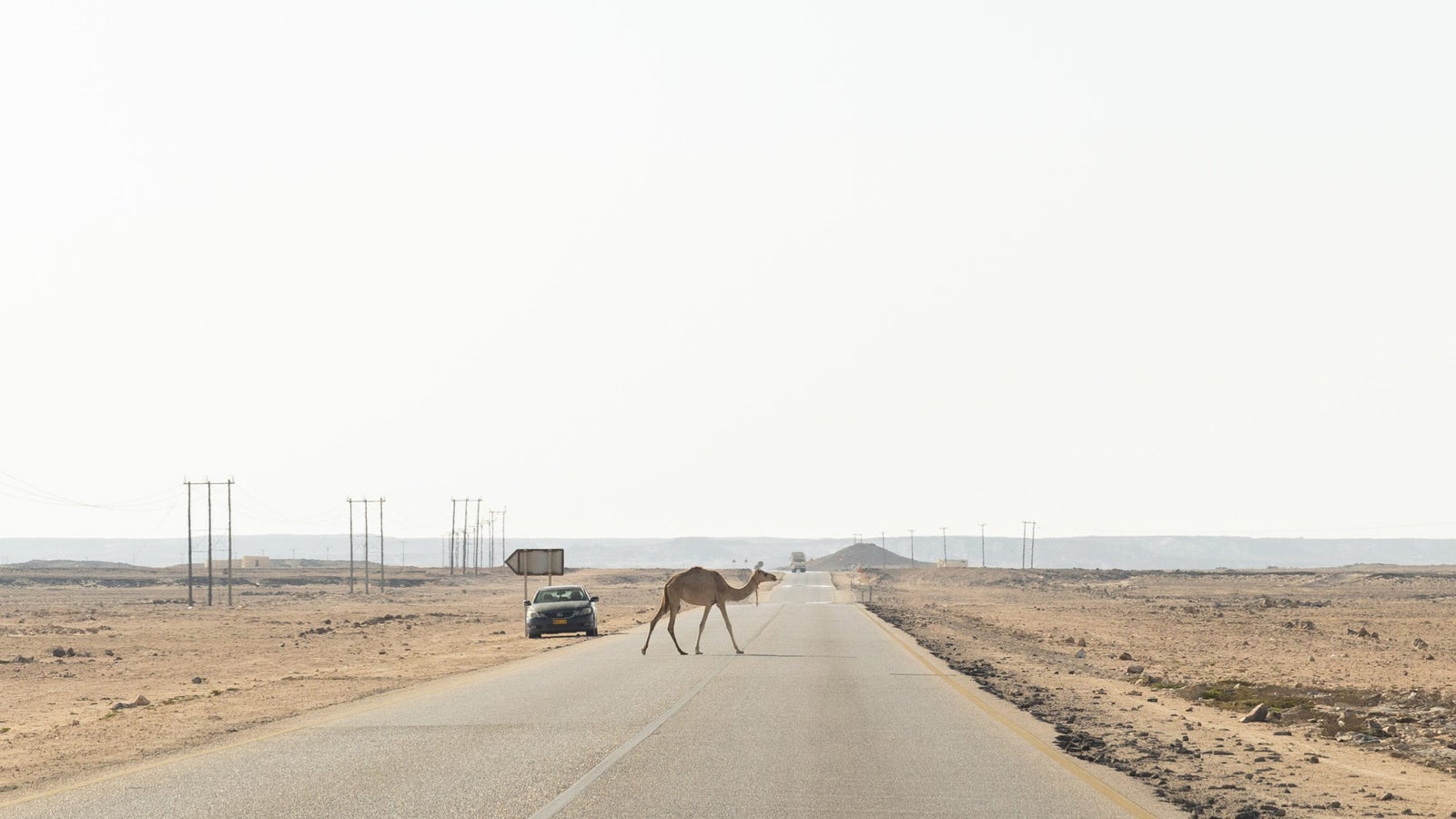
The road to the Etlaq spaceport from Duqm.
Tara Atkinson for Rest of World
The road to the Etlaq spaceport from Duqm.
Oil can’t fuel Oman’s renaissance forever, though — its reserves are expected to run out in some 15 years. The government’s Vision 2040 program strives to wean the economy off fossil fuels through investment in fishing, agriculture, green energy production, and the nation’s nascent tech industry. Oman’s tech economy accounted for just 2% of its GDP in 2024. The Sultanate wants to increase it to 10% by 2040 — and Etlaq could play a major role.
The national space program was established by royal decree in 2020 by Sultan Haitham bin Tarik, the hand-picked successor of Sultan Qaboos, who died the same year. The National Aerospace Services Company — a private company that works closely with the government — was founded by a royal relative shortly thereafter. Etlaq is one of NASCOM’s signature projects.
Oman does not yet possess the domestic expertise for a successful large-scale space program, which will need highly trained and experienced staff. That’s one reason the country hopes to attract foreign corporations. Cantrell’s Phantom Space wants to be part of the process. The startup aims to mass-produce satellites in Oman with parts manufactured in-house, training locals along the way. In exchange, Phantom Space would incur lower costs for materials and labor. “This is actually getting engineers and technicians and skilled touch labor to come in and build these things, and we’ll do knowledge transfer,” Cantrell said.
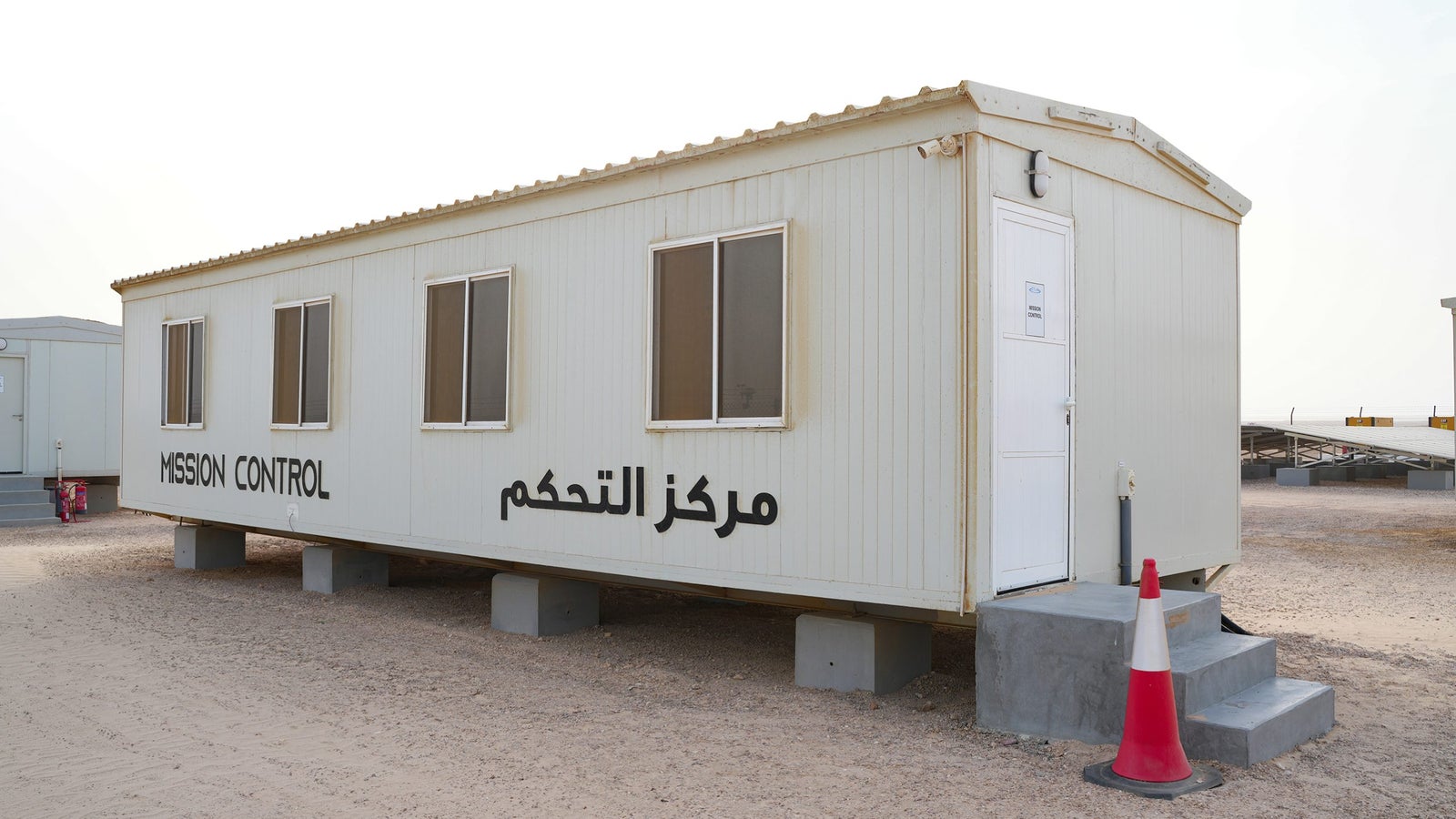
Etlaq’s current mission control with the spaceport still under construction.
Etlaq
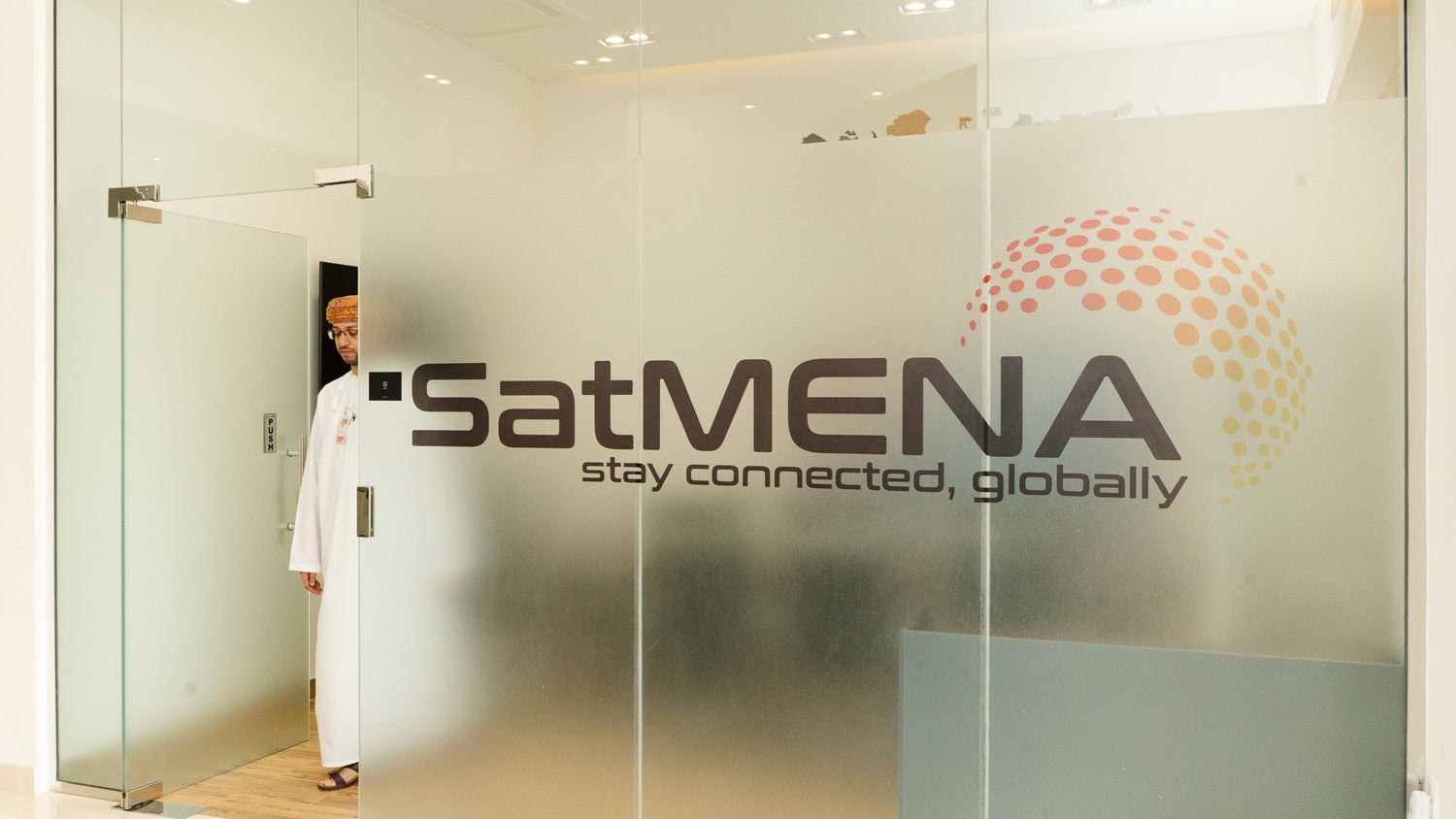
The SatMena offices in Muscat.
Eman Ali for Rest of World
The knowledge gap extends across Oman’s nascent space industry, and domestic companies are working with foreign partners to close it. Muscat-based ETCO Space, for example, worked with two Polish companies to develop Oman’s first satellite. The three companies have now joined with an Australian startup to build satellites to monitor things like crop health, algal blooms, and border security. They hope to begin launching them by the end of the year, which will require payload space on a rocket. “The minimum wait time, I believe, if you want to launch with SpaceX, is something between four to eight months,” the company’s CEO, Abdulaziz Jaafar, told Rest of World. And that’s only if you join the waitlist and get lucky. Currently, wait times for a rideshare from SpaceX, the dominant player in the industry, are well over a year.
For Omani companies, that will change once Etlaq opens: An agreement guarantees Etlaq will prioritize ETCO payloads and provide the company with facilities for research and development. Already, the two are actively sharing knowledge and expertise. Jaafar is also pushing Omani universities to offer space courses and scholarships. “If you want to build a purpose-specific satellite, then you need higher skills, you need more knowledgeable people — people with higher degrees in physics and aeronautical engineering, aerospace engineering,” he said.
If all goes well, Causey said, “Etlaq will become less known for launching satellites and more known for being an economic space, [and a] commercial space cluster of activity.”
The first launch from Etlaq was in December 2024. From a distance, the slender 6.5-meter research rocket looked like an enormous pencil blasting skyward from Etlaq’s temporary launchpad. Assembled in Oman and launched by NASCOM, Duqm-1 soared above the edge of the atmosphere, then began to fall back to Earth as planned. The spaceport chose not to host a public viewing, Al-Riyami told Rest of World, for safety reasons. But Omanis wanted to see their nation’s first rocket launch, so some showed up anyway and were asked to stay outside of an exclusion zone.
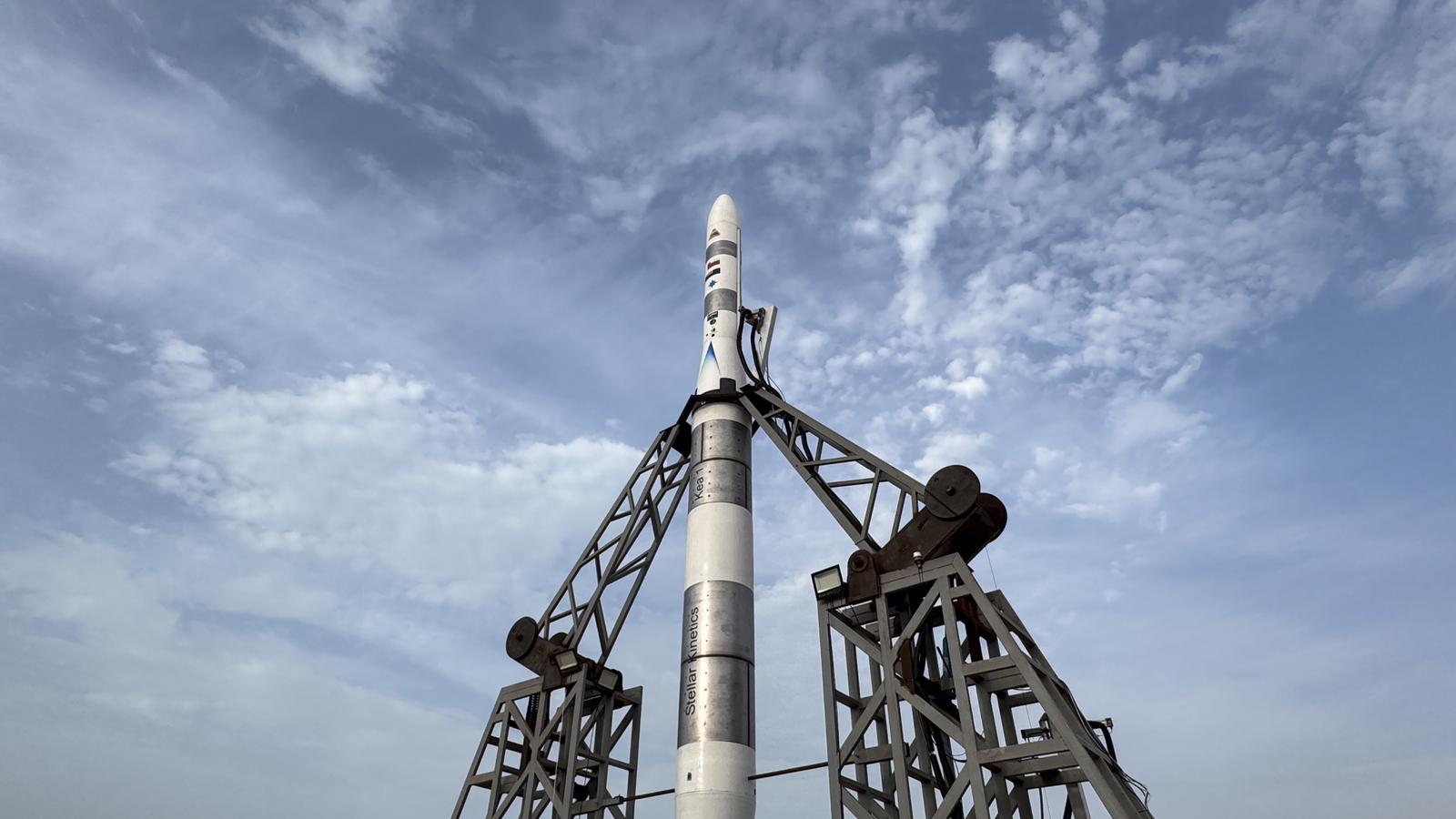
A rocket stands on an Etlaq launchpad.
Etlaq
These early launches are part of what Etlaq calls the Genesis Program, which will continue until it officially opens for orbital launches. For now, it’s starting small by focusing on suborbital launches like Duqm-1. “The idea is to host as many launches as safely possible,” Al-Riyami said. “We can work with orbital launchers, but we’re choosing to work with the simpler missions as we build capacity.”
The rocket that was set to launch at the end of April’s Etlaq Fan Experience was named Horus 4, for the Egyptian god of the sun and sky. Slim, black, and just a meter tall, it stood atop a folding table in the center of one of the event tents. Kids posed for pictures beside the rocket as four engineers from the private company that built it — Advanced Rocket Technologies, or ART — stood to one side. They radiated a calm, confident excitement. “[We’re] starting small, trying to learn on the way, testing our ideas and systems on a small scale,” Mrwan Mohey, the company’s 26-year-old co-founder, told Rest of World.
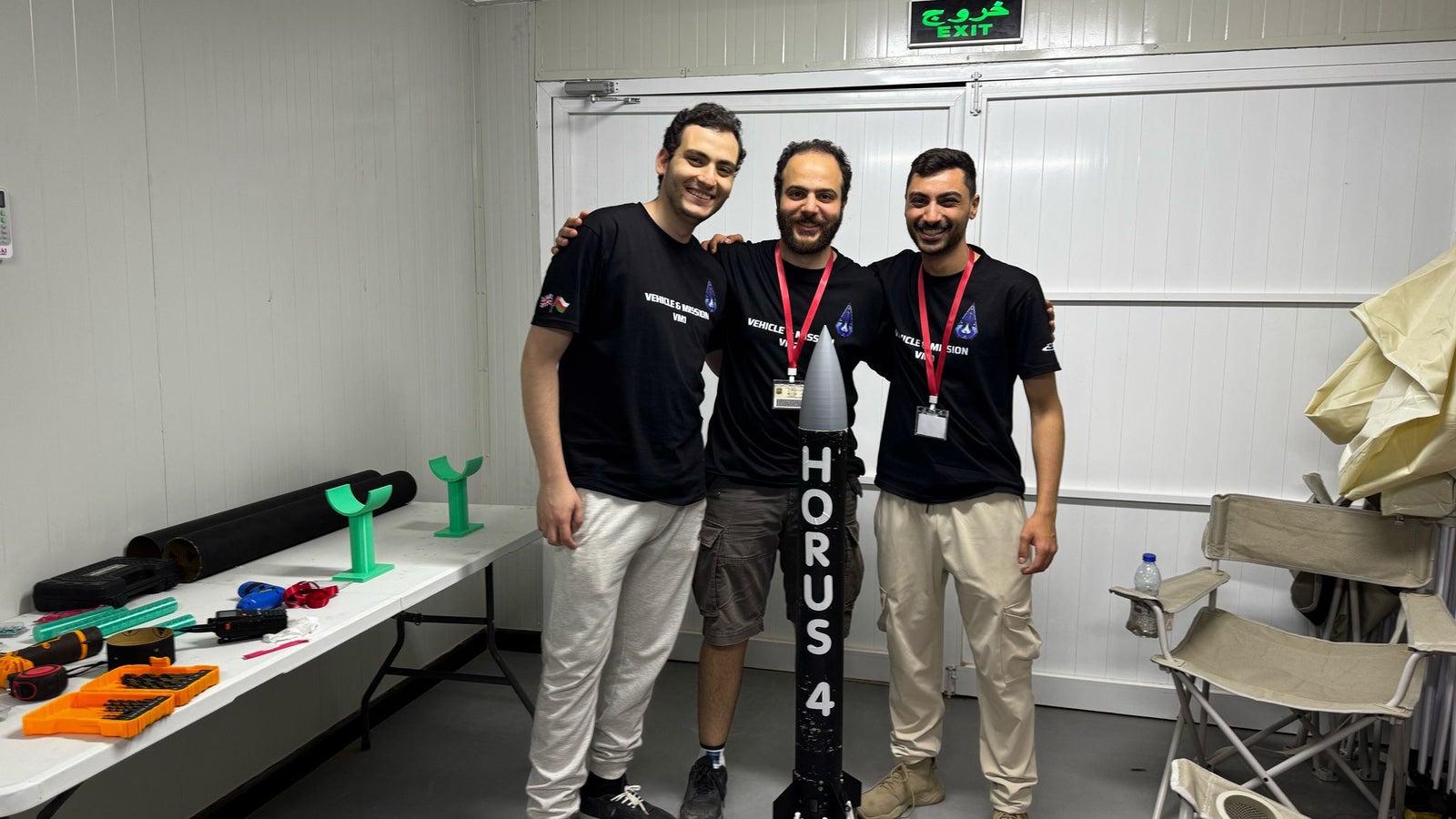
The ART team and their Horus 4 rocket.
Advanced Rocket Technologies
The reusable prototype, designed to reach a maximum altitude of 75 meters, would help ART test the elements it plans to incorporate into larger rockets, like thrust vector control and a vertical landing system that allows it to return to the launchpad. The rocket was also intended to convince investors to take a chance on the company’s next step: a 10-meter suborbital rocket. Eventually ART hopes to build a reusable rocket able to take payloads into low-Earth orbit.
Mohey and co-founder Seif Zahran launched ART three years ago, shortly after graduating from college. “I’m a space nerd and he’s an aviation geek,” Mohey said. Both were born in Egypt and share the goal of facilitating the region’s push to the stars. No private company in the region has yet developed a launch vehicle capable of taking satellites to space.
The company consists almost entirely of recent graduates and master’s students, Mohey said, and “everyone has another life and job.” He works in marketing. Zahran is a luxury watch salesperson.
Horus 4 did not make it into space. The heavy winds forced ART to scrap the launch. The next week, during deployment testing, the team discovered a technical issue and scrubbed the mission. They hope to try again before the end of the year.
In July, another launch was cancelled — this one for a rocket built by a New Zealand-based company. A prelaunch check revealed a problem with the rocket’s actuator, which helps control the vehicle’s orientation during launch. It seems increasingly unlikely that Etlaq will succeed in achieving the five launches originally planned for 2025.
“ Space is hard,” said John Sheldon, the co-founder of a London-based space consultancy who has spent nearly 30 years in the sector, when discussing Oman’s ambitions. “Murphy’s law always applies. If it can go wrong, it bloody well will.” SpaceX destroyed three rockets before the fourth made it to the stars in 2008 and kick-started the boom in the industry. The first Apollo mission ended with a launchpad fire and three dead astronauts.
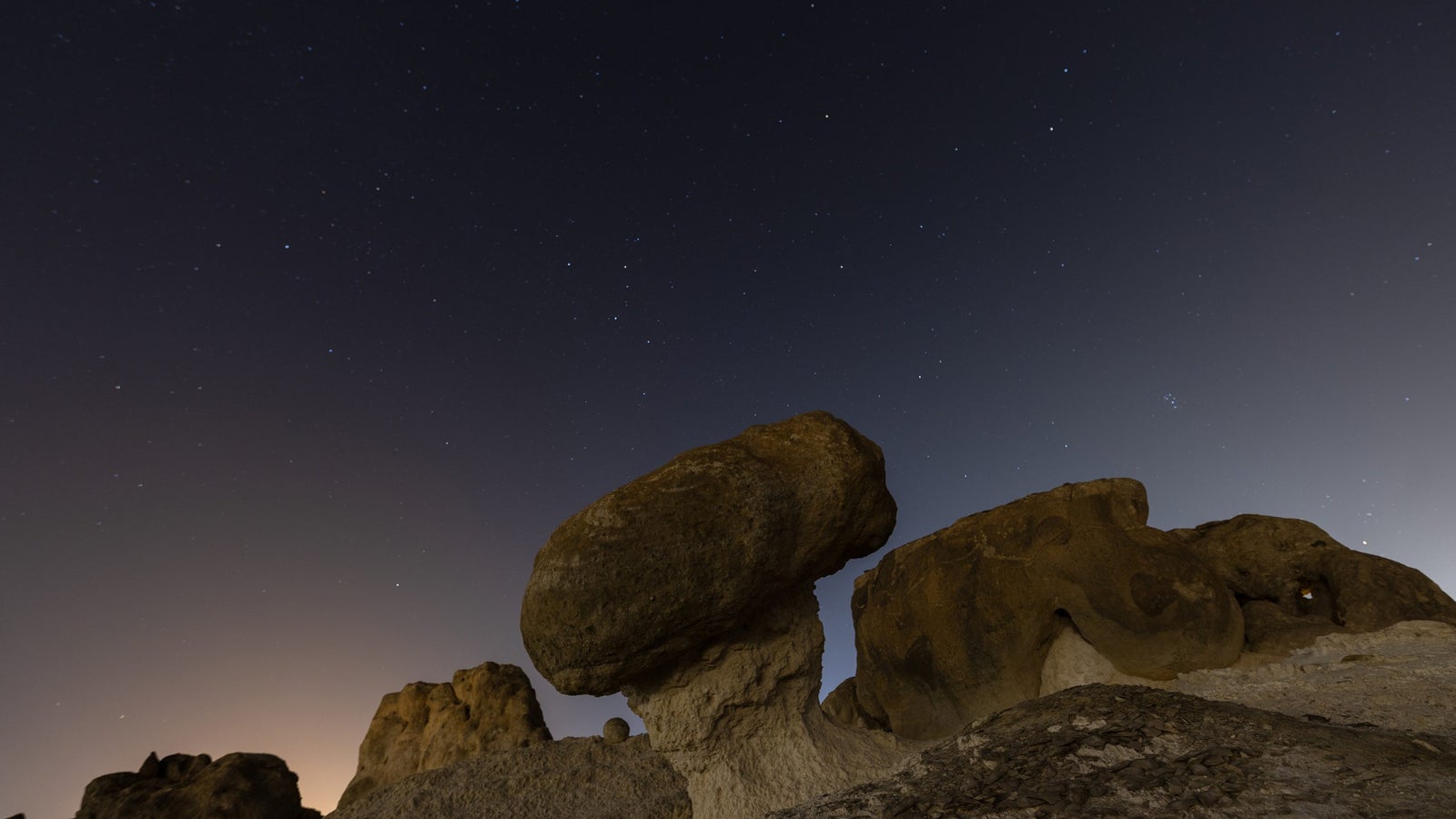
A natural rock formation on the outskirts of Duqm in October.
Tara Atkinson for Rest of World
In a LinkedIn post, officials at Etlaq described the aborted July launch as having “successfully concluded without Ignition.” Those involved in the Genesis Program stress that a major part of its focus is upskilling.
“Yes, we are a little bit late,” Ammar Al-Rawahi, chief commercial officer at satellite communications company SatMena, said of the country’s entry into the space industry. Al-Rawahi has been intimately involved in Oman’s nascent space program ever since he co-founded the Oman Society of Astronomy and Space in 2008. He sees the country’s current launch efforts as a continuation of a long-running journey, and believes in the careful approach. The decision to start small means mistakes are learning opportunities and not catastrophes. “The good thing,” Al-Rawahi said, “is that Oman is moving wisely.”

